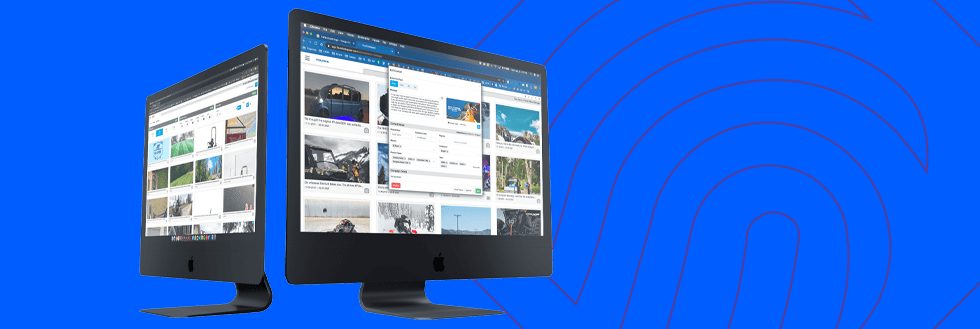Large, distributed teams have many moving parts, making it challenging to stay organized. Add influencers, channel partners, co-op advertisers, and other external stakeholders to the mix, and staying organized is no longer an option, but a necessity. Brand asset management is designed to streamline this process.
What Is Brand Asset Management?
Brand management software helps your brand create, store, update, and share digital assets in a place that’s easily accessible to both your team and stakeholders.
Brand assets are collateral that contain information pertaining to your brand. They can be logos, photos, videos, graphics, style guides, usage guidelines, advertisements, color schemes, and more.
How Does It Differ From Digital Asset Management?
Digital asset management (DAM) encompasses all of your organization’s digital resources, whereas brand asset management pertains to collateral that contains brand-specific information. While brand assets are technically part of your digital assets, keeping your branded assets in a separate, sharable platform will help you stay organized and makes collaborating much easier.
How Can Brand Asset Management Help You?
How your brand is represented across your and your partner’s networks impacts your brand identity — keeping control of your brand assets, including who uses them, how, and where is critical to managing it.
Maintain Brand Consistency
Brand consistency acts as a critical pillar of support to your brand identity. Think of Walmart, Nike, Netflix, and McDonald’s. Because they’ve maintained a consistent representation of their brand across all channels, at the simple mention of their name, each brand’s logo, colors, and slogan probably come to mind.
When you collaborate with channel partners and retailers, you’re trusting them to represent your brand accurately. This is a risk to your own brand consistency — even the smallest misrepresentation of your brand, such as using a low-resolution photo or outdated logo, can confuse your customers, costing you their trust and tarnishing your brand identity.
You will have the greatest impact in the marketplace if consumers can always recognize your brand. With the right brand asset management tool, brand consistency and brand integrity become much easier to maintain. This software ensures you’re providing your stakeholders with the correct assets and makes it easy for them to communicate your product or service in a compliant way on any channel.
Streamline Collaboration

External partnerships are a valuable part of many brand’s marketing strategies, however, most brands find their strategy is disconnected from their retailers. Some struggle to keep their retailers engaged in their co-op marketing programs, and others find it difficult to ensure their partners are publishing on-brand, compliant content. Retailers, on the other hand, are typically responsible for running their business, they may not have the bandwidth, expertise, or resources necessary to represent your brand as you’ve requested.
Brand asset management bridges the gap between you and your retailers, making it easy to find mutual marketing success.
Increase Efficiency
With a variety of product photos, logos, and supporting files that are all made in different file sizes and types, it can be easy to become disorganized. Your sales team, channel partners, and marketers need quick access to accurate, on-brand materials.
Brand asset management software ensures the right files are in the right place, making them much easier to find. What’s more, the right software will free up the time you’d spend on storing, managing, and distributing your assets, which you can allocate back to the many other marketing needs of your brand.
How to Select the Right Asset Management Software

With the endless options on the market today, finding the right brand management software can be challenging. As you search for the right solution, it’s important that you keep its purpose in mind: To act as the hub of your content management system.
The software you select should make it easier to:
- Store and organize brand assets
- Find the assets you need through searching, filtering, and tagging
- Share the right files with the right users
- Keep track of analytics and measurement
- Streamline workflows
- Automate your efforts
- Convert and edit files as needed

Conduct research and compare your options. Look at case studies, reviews, and ask for customer testimonials or referrals. Once you’ve narrowed down your choices, request a demo to see how each option compares.
Unlock the Hidden Potential of Your Brand’s Social Presence With ThumbStopper®

Take charge of your brand’s social marketing tactics with ThumbStopper’s Brand Manager™. Our software is designed to help brands find success on social media by giving you control over what, when, where, and how your content is deployed on your retailer’s networks.
Brand asset management is just one of our many capabilities. When you partner with ThumbStopper, you also benefit from:
- Automated content amplification and syndication
- Optimized social ROI
- Increased social media Engagement
- Simplified retailer onboarding and co-op marketing programs
- Performance and reporting capabilities
Contact us today to find out if ThumbStopper is a good fit for your brand.




